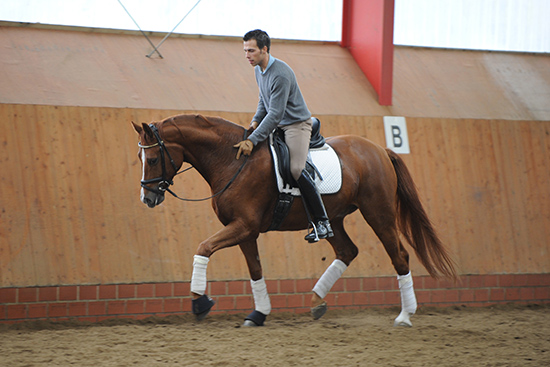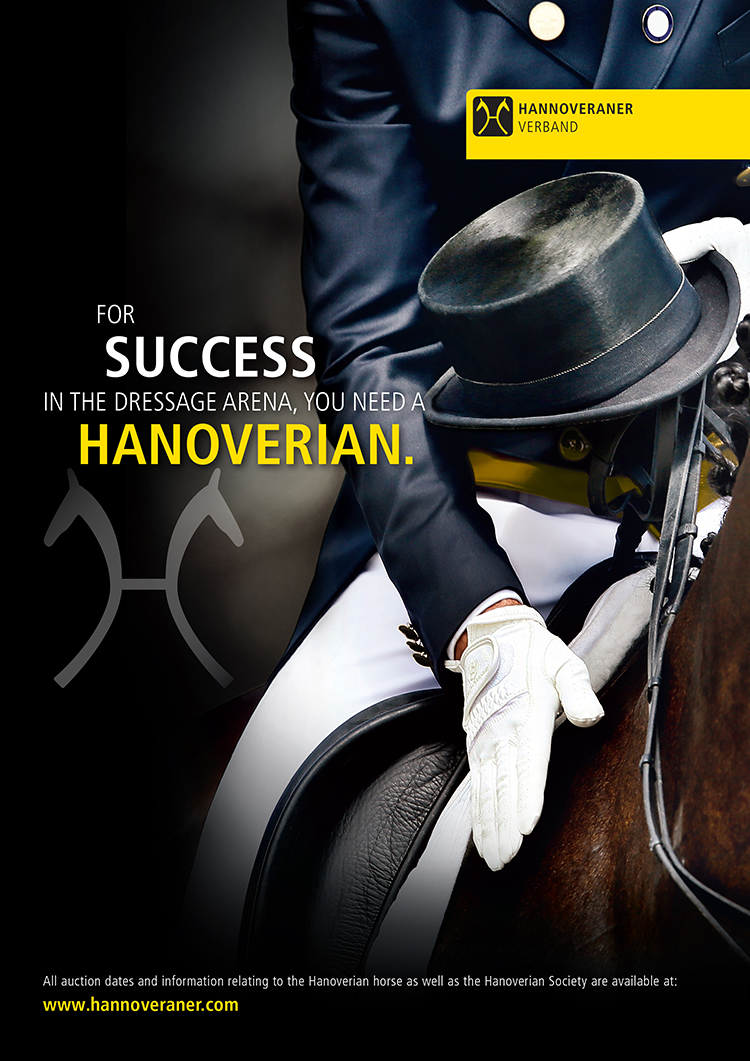Story by Chris Hector and photos by Roz Neave
There are some very flamboyant dressage trainers in this world who delight the multitude with their special tricks and unusual training routines, but thankfully there are many more like Jonny Hilberath, who just quietly get the job done…
Based not far from Hamburg, Jonny Hilberath has long been well known to his fellow competitors, but only recently, since he has been appointed assistant to German team coach, Holger Schmelzer, has Jonny stepped into the limelight. Indeed it was noticeable at the recent European championships in Windsor, that it was Jonny who was working the riders in, and standing in the coach’s box during the actual test, but then again, it has never been a secret that Schmelzer’s role is more that of team manager than hands-on coach. Everything about Jonny Hilberath is hands-on – and he still regularly competes at Grand Prix level.
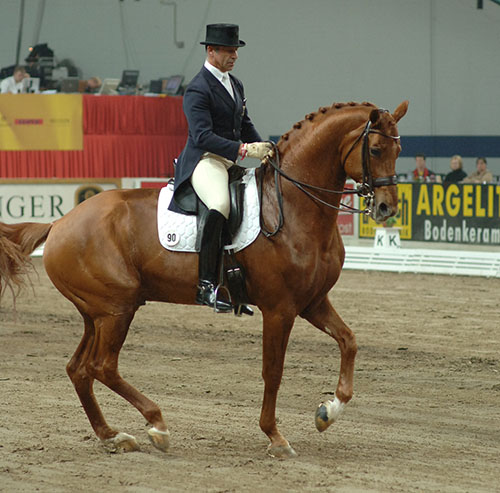
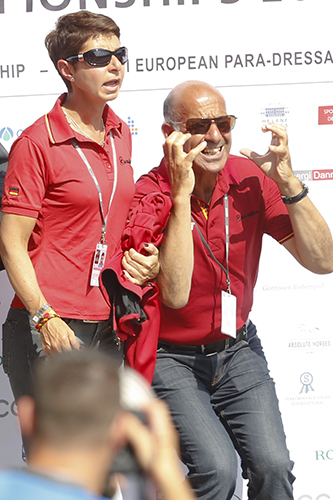
Above: the two faces of Jonny Hilberath: Competing with Wenckstern, and coaching the German team – the lower pic was taken when one of the leading German riders made an error in test at the Europeans …
Watching him work at home, I learn for the millionth time, that really good training tends to be a bit boring, the good trainers use the same methods and they use them quietly and progressively.
People have this stereotype of German dressage training, of strong riding, of clashing aids… but this is not how I find it when I travel in Germany…
“That old style definitely belongs to the past, we have changed our way of thinking and training. We learnt a lot from the veterinarians about the way horses needed to be treated, and you find yourself as a rider that you need to go with the horses. The horse should be able to tell you in which kind of way the training should be. A lot depends for example on the conformation of the horse, the construction of the horse, especially when it comes to young horses. For young horses the most important thing is the balance, to give him confidence to start work. We have to look where is the horse in his construction right now – is he downhill or uphill? The answer tells you as a rider and a trainer, what you do with the horse.”
“The so-called old German style was never really a style for all of Germany, there were always different ways of training and now we are much more individual.”
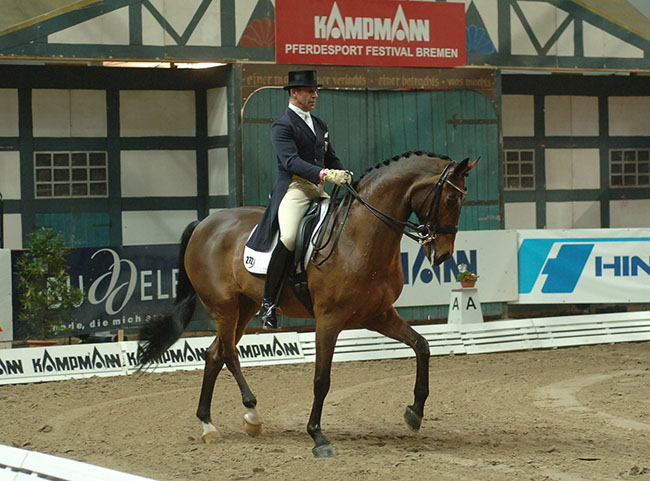
Jonny and Foriano competing at Bremen in 2007
There is a lot of debate about the ‘spectacular’ style of dressage of recent years, are we starting to see a more natural, relaxed style of dressage?
“I just want to talk about my opinions, and my ideas about training, and what I have found in the last years, is if you have a horse that has a good basic quality and you manage to bring the horse over the back and into the greatest possibility elasticity, through the collection, if the horse has that quality, then the horse can get spectacular without going with extreme pressure or being forced. A horse that goes with a lot of expression doesn’t need to be over-forced and ridden or trained in a wrong way. It is a matter of basic quality, elasticity and a quiet way of swinging through – I must say there are certain horses right now that have a lot of basic quality, horses that I personally really really like – Laura Bechtolsheimer’s Mistral, or Adelinde Cornelissen’s Parzival – these horses when they start in trot you can see, even on the long rein, that they have a lot of elasticity and ‘rubber’, and through the collection and good training, they have produced this fantastic work we saw at the European Championships. This I think is a matter of training.”
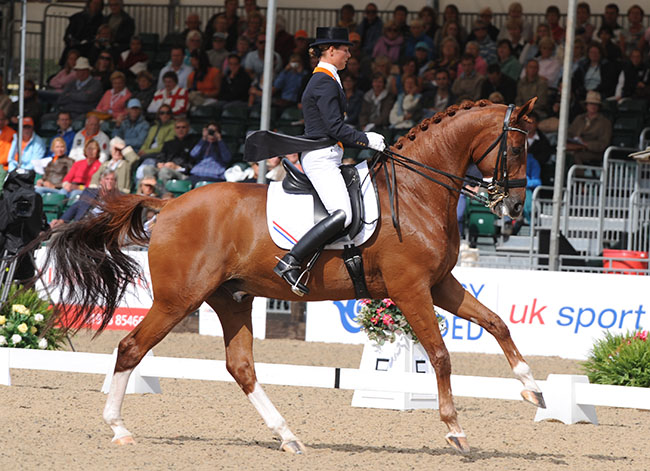
Parzival at the 2009 Europeans
story continues below the advertisement
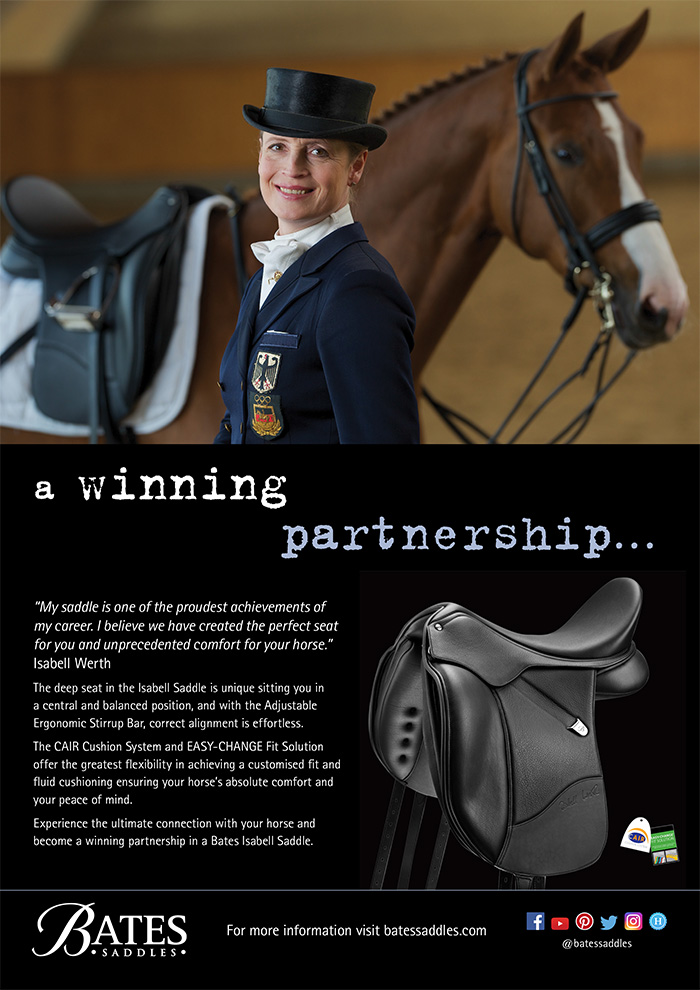
But for a while in international competition there were horses getting good marks, and it was not right, the front legs were up in the air, the back legs just dragging along, or three legged passage… but still great marks, but the two horses you spoke of at Windsor – Mistral and Parzival – the work was very correct…
“Absolutely, you are totally right. I must say I am not personally a friend of judging a horse by just the second that is caught in a photo, because you can get from more or less all horses, not such good photos, if you take enough. But in principle what you are saying is right, however a horse moves, it has to be done correctly – if a horse trots, then it must be a two beat, no doubt about it, no matter how spectacular. That is absolutely a must, that we keep the natural paces – what nature gave the horse. That is our highest goal, that is what we have to cultivate. We should try to cultivate the natural possibility of a horse – we can’t make a new horse, and we shouldn’t even try.”
It is interesting, you spend a lot of time training horses, but I spend a lot of time looking at photos of horses, and the horses that are correct, it is very hard to find the horse out of position in a photo… a horse like Parzival, you can’t find these bad photos… maybe the rider gets a little out of position, or the mouth is not great, but the actual shape of the movement, doesn’t change with the good horses…
“Parzival is a good example, because it has a lot of natural balance, he is constructed naturally uphill, I think it is in his genes to carry himself. For sure, the training has made the horse better but I don’t think it needed so many exercises to make him like he is now…”
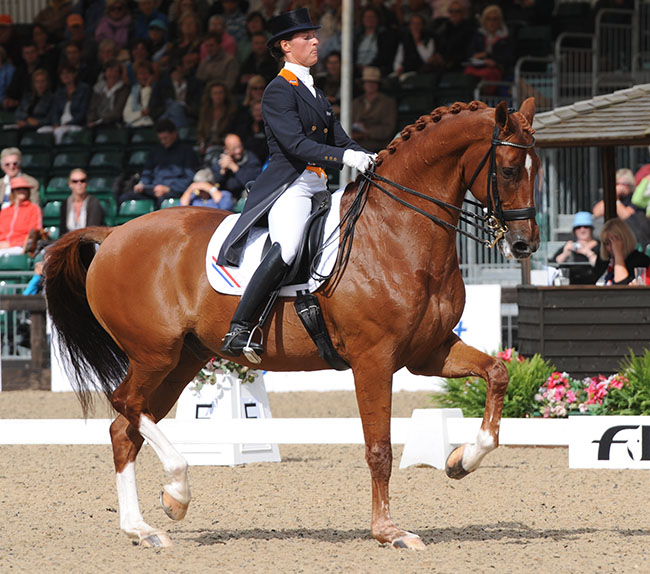
Parzival, a lot of natural balance
“All over the world, we produce so many horses, the breeding gets bigger, and I think the basic quality gets better and better. My personal belief is that the marking – and I am not a judge – will get more like it was in the past. I think at the European Championships, it was something special, because everyone was so excited, especially about Totilas. They were all hyper before, and for sure, the horse did a very good and spectacular performance but in the future I think things will be seen more critically, and I am very sure, we will now get more quiet again and talk a bit more about correctness and technique. For sure horses that have something special will always get more marks than a horse that is not so special, but I personally hope you will not get just points with a spectacular horse that is not doing the work correctly.”
“I am sure we will still find a rider who works the horses correctly will get the top marks. I am talking about top international competition and in this field, you have mainly horses with a lot of quality… time will tell, and the judges will tell.”
Do you find it a challenge? You do a lot of things at once – compete at Grand Prix, train your own riders in competition, and then you also help with the German team riders…
“Actually I do what I always did in my life. From the beginning I was a rider, and the last 15 years I’ve become a trainer, and that’s what I do. Now it changes a little, I am still a rider, but I don’t do so many competitions any more, even now when I have the two nice horses, my focus is on training. I try to organize myself as much as I can and it is a big challenge. It is a lot of fun and it is also very inspiring. I always say, since I teach so much, I have become a better rider because you have to think more about processes. If you have to explain things more, it helps you to ride better.”
more below
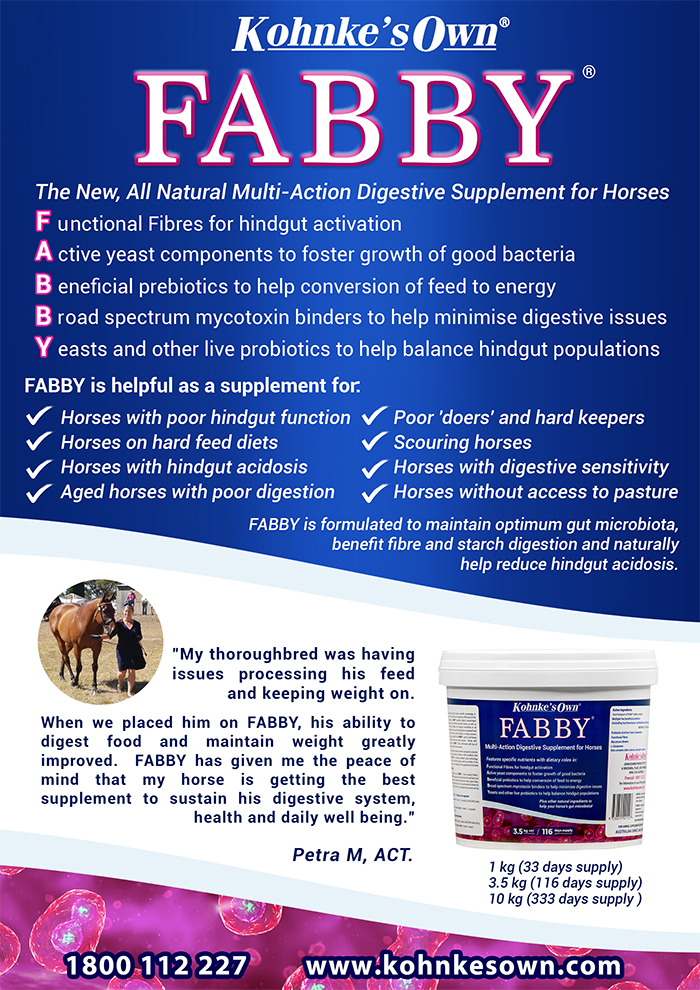
But it must be different – you have regular riders who you are working with every week, and you can mould those riders over time, then you come to somewhere like Windsor, working with really high powered riders in a German team who come from all different personal trainers – is that hard?
“There is a kind of responsibility on my shoulders to make it as good as possible for the country. But the way to train doesn’t change for me, I always look for the same thing, always look for correctness, it doesn’t make a difference if it is one of my personal students, or one of the team riders. The big difference is that when you are a national coach, you don’t have the team riders as your students – it is more organizing and coordinating. It is much easier for me, and for any trainer, when you have the people who train with you regularly – that makes it a bit special when you have to go with a team or a rider on a show and they are not your pupil, and have the right feeling for the rider, the horse, and the situation. You have to be the diplomat, and never irritate the horse and rider.”
more follows
Enough talk, time to sit in the Riding Hall and watch Jonny ride Devina.
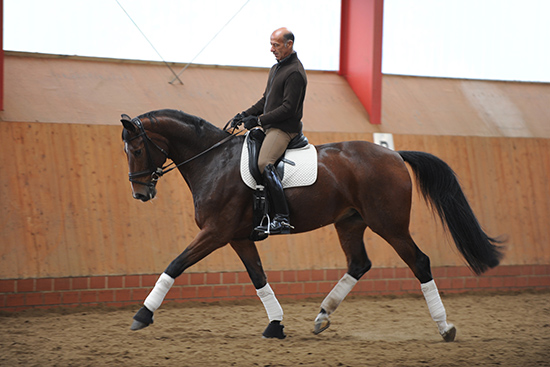
“The mare is seven and she is a bit greenish. She does a lot of things but she is still not ready in a way with her body. She is a horse that I really like, very talented. She is by Don Vino, and then the mother line is Wundersbusch like my Grand Prix horse, Foriano, so that also makes her a favorite horse. She is a very energetic horse…”

What is your objective today?
“The horse will tell me what the day will bring. I always get on the horse, and see how they feel and I go for that. Especially with the young horses, I always try to use the mood of the horses. She has competed this year at Medium level, and she is doing all the work of Prix St Georges, also a little piaffe / passage. We try to get her ready for the Small tour in the coming season, Prix St Georges, Inter I, but the main focus is the Grand Prix. Maybe at the end of next year she can start with the Young Horse Grand Prix.”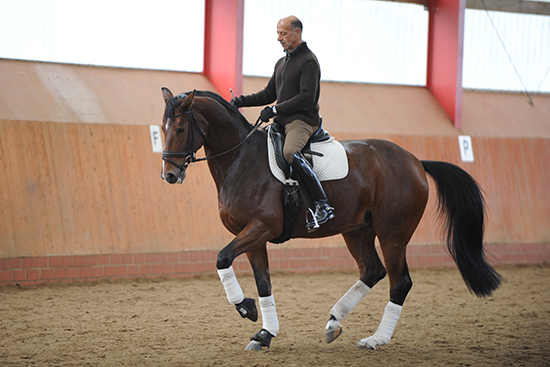
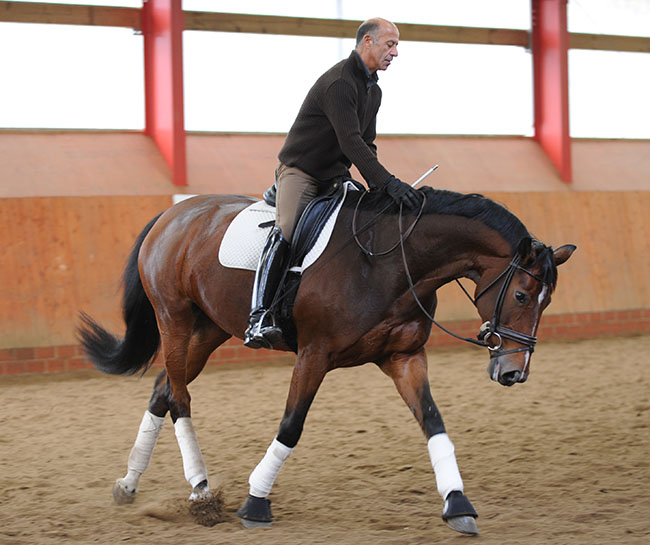
The work is excellent, the mare is so active and forward, so nicely with the rider, but when Jonny takes up his coaching position on the floor for a session with his Bereiter, Manuel Bamel on his nine year old stallion, Larry Potter, by Londonderry out of an Argentinus mare, it all goes a little pear shaped. Jonny has set out to try and do a little work on the piaffe…
“Today I will help him today from the ground with the piaffe. The horse has been quite successful in Small Tour, and he does the one tempis and he passages quite nicely, and he piaffes, but that is his weakest point, so I will help him a little bit from the ground.”
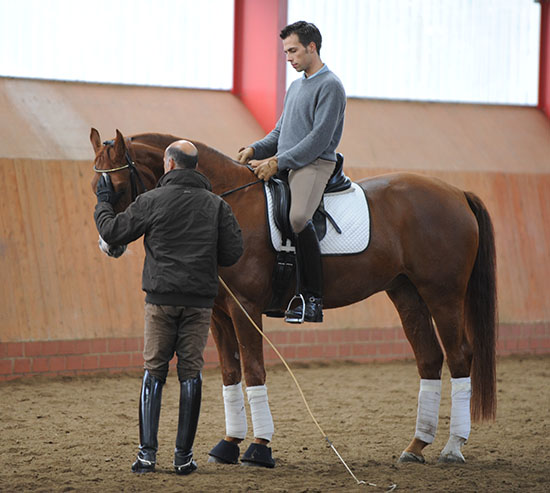
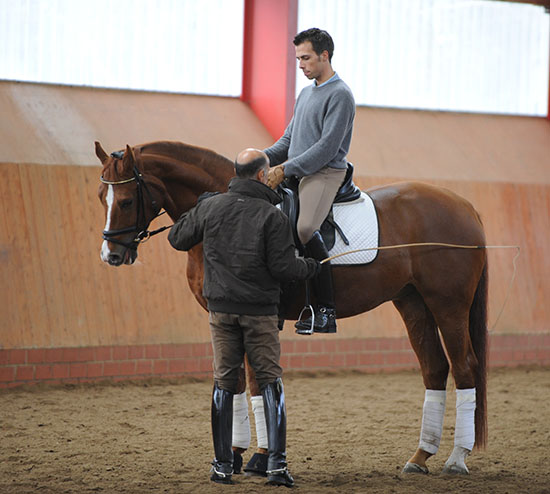
And yes, horses can certainly be horses, and today Larry Potter is a little over the top, and just will not relax enough to allow the work to come through. Jonny is a bit exasperated as we share a cup of coffee afterwards…
story continues below the advertisement
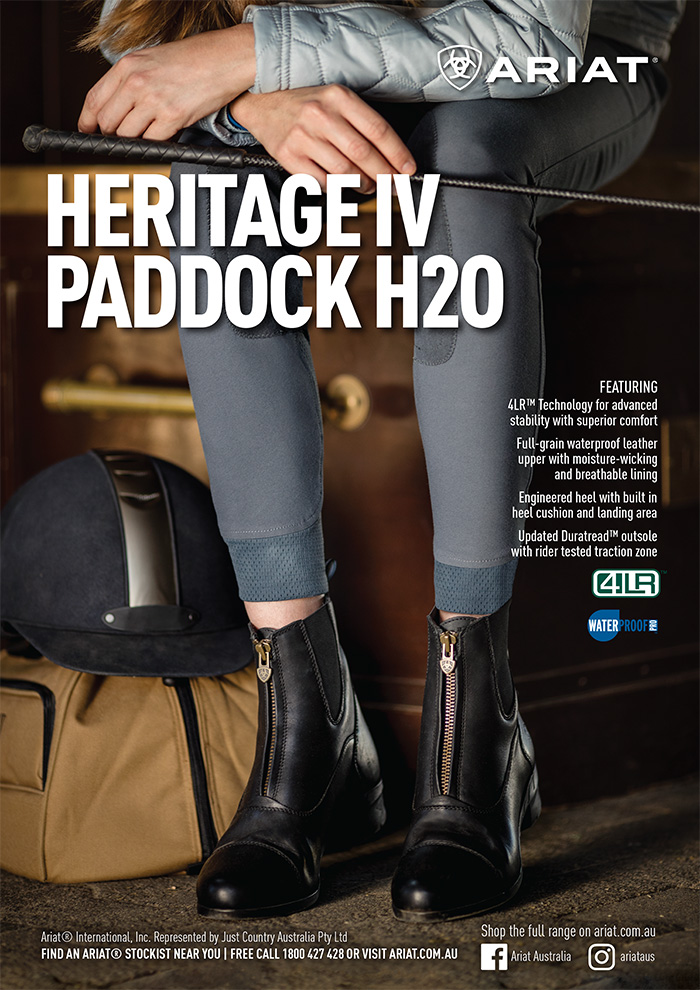
“In a way, the horse crossed my training plan, that’s what I am saying though, we must work with what happens on the day. I have been away for a week, and the horses have been just exercised and lunged and today it did not work. Tomorrow is another day, and the day after that, another. I am personally very relaxed about these things. You try to reach a certain standard, and then you realize it is not the day. After this week of more or less easy work, they are not perfectly prepared. Better then to go with the horse.”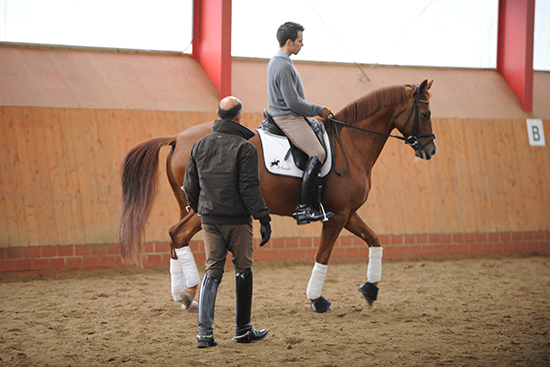
“The horse doesn’t know piaffe, he can do better half steps than he did today but it is not like he is ready to do piaffe. It is a good example to show that there might be a beginning, but you can’t expect that every day. You have to see the horse all over, not just look at what the legs are doing – you have to look at the horse’s attitude. Today the horse was not in a working mood, not concentrated or with me enough, and not loose and supple enough. So tomorrow we will work him just more supple, more through, and maybe the day after we will try the piaffe again. We have to involve all aspects of the horse and of the training, and take into account what has happened in the previous days, to get the best result out of the horse when you train.”
It is a difficult concept, the concept of positive tension? Almost a contradiction in terms – how can we have tension that is positive, but we need it for these steps of piaffe…
“Absolutely, there is no Grand Prix without tension, tension is nothing negative, nothing strong, or heavy or panic, it’s more extended schwung – horses get a wave through the body… this wave we didn’t get today, but there is a reason. The horse was off yesterday, too short a preparation today, so there couldn’t be a wave in his body. What I am focused on, is that the neck and the back work together smoothly, so we can get the horse together and collected, when we get him enough together he has the balance for the half steps, for the collection. It is very simple and I was hoping to show it today, but it didn’t work.”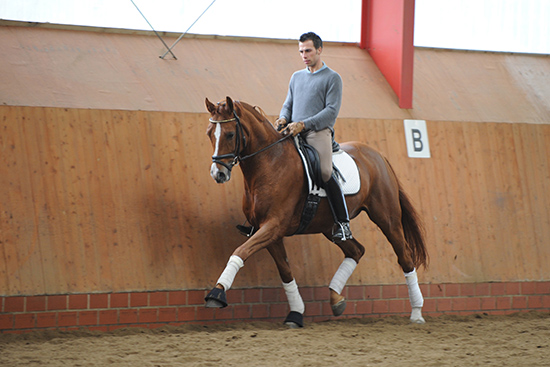
What age do you start to try and do that work?
“It depends a little bit, often in the winter between the age five and six, I play a little with it, mainly from the top. Just to see if I get any kind of easy natural reaction, that’s my beginning. If I can just ask them from the ground to jog on a little, and if I see they are easy with that, then we do it maybe two times a week from the ground, let the rider just go around the arena and just follow, cluck, cluck, until they jog on. Very very natural, I am not the type to say, today is the day and you have to do it – I try to make it over the long term.”
read on below
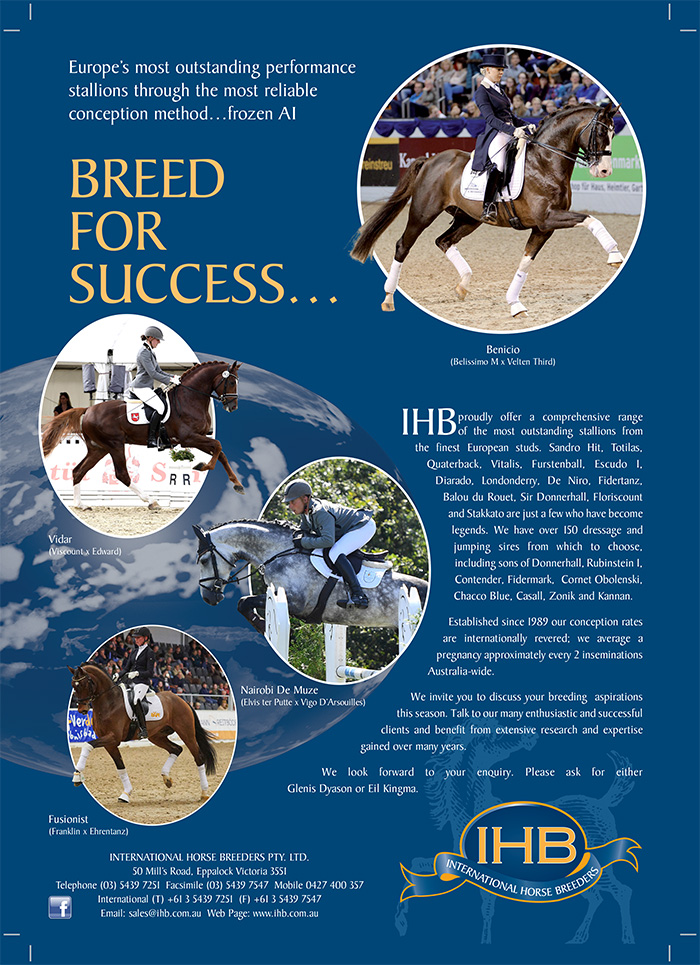
The work with the whip is an art?
“Yes, you have to read the horse. There are moments where you should not use the whip because there is enough tension and excitement in the horse. I try to wait. Today I was waiting quite long because there was no reaction.” Jonny is laughing… “Normally when the horse is with you, when you have a connection to the horse, you touch the horse to get a little excited, and if he understands half steps he produces more by himself, that is my idea, again it becomes more like a natural thing, what the horse wants to show off to me. I don’t need to ask too hard from the horse.”
You don’t hurt the horse with the whip?
“No, I just stimulate the horse, not a punishment for not doing right, because they can’t do better.”
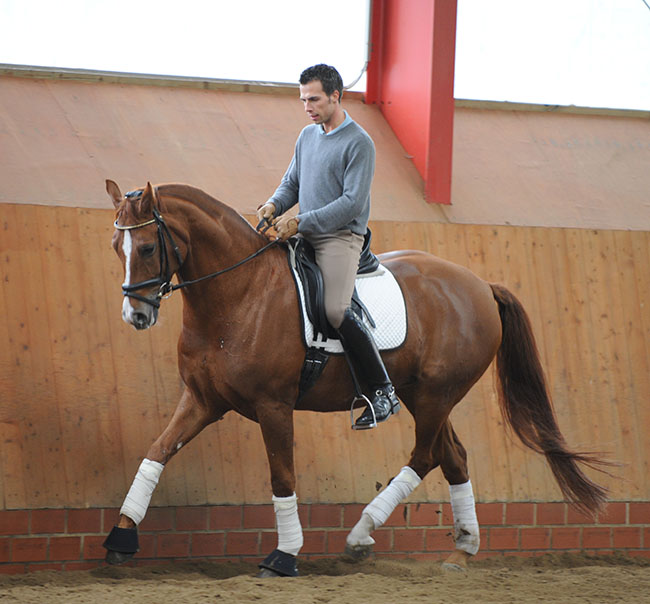
You prefer to use the whip with the lash on it?
“Yes because I just want to make the horse react, to try to make the horse piaffe, always start it from the half steps, forwards so they stay diagonal, and I found out that this soft whip doesn’t make the horse nervous or afraid, you just get that extra stimulation.”
Hayley Beresford tells me you were very kind to her at the Olympics in Hong Kong, and when Isabell was busy, you worked her in…
“It was actually a fun thing. Isabell had the idea, because her ride was so close to Hayley’s, she had to prepare herself, to ask me because we have been talking before Aachen and Hong Kong, when we were in the training camp and in the quarantine, so I was watching quite a bit the training with Isabell and Hayley, so I knew what Isabell was looking for, and I think I could catch up quite well with Hayley. I thought it was a good ride that Hayley did, it was fun to work with her, she is a very good rider, a very positive and open minded girl, I’m sure she will make her way.”
And Jonny Hilberath is another person, who will quietly, steadily, make his way.
This article first appeared in the March 2010 issue of THM.